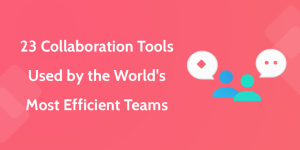
Circa 2005, blogging quickly became one of the hottest Internet trends of all time. Using simple, straightforward publishing mediums like Blogger, just about anybody with a computer, a passion and a few functioning brain cells could hop online, create content within a given niche and see a constant, steady stream of traffic.
Sorry, digital marketing ninjas—over a decade later, this most certainly in no longer the case. In fact, in today’s day and age, Internet experts estimate that there are well over 150 million blogs floating around on the World Wide Web. Sure, most of those are abandoned, collecting virtual cobwebs with each passing day, but with companies from all sorts of industries looking to make a name for themselves online, the number is still petrifying.
So, with so much noise out there, what’s to be done? Much like Beanie Babies, Tamagotchi pets and JNCO jeans, has blogging run its course? Not in the slightest. Yes, things are different, but the main problem blogging businesses encounter online is the mentality with which they approach on-site content creation. Bluntly put, most are just blogging for the sake of blogging.
They’ve read somewhere that, regardless of industry, every website should include a blog. Following suit, they had their “tech guy” add one, and immediately hired out a freelance writer to load it with as many 300-word blog posts as humanly possible. Sound familiar? If so, know that there’s a better way for you and your business to blog—content pillars.
What Are Content Pillars?
Content pillars are strong, stand-alone pieces of content that sustain a business’ larger, more expansive content marketing blueprint. Much like the massive, awe-inspiring Roman columns that come to mind, they’re supportive in nature, bearing the bulk of a website’s content needs.
When substantive, instructional blog posts are created, published and effectively promoted, not only is Google much more likely to recognize your post as an authority on the subject, but you’re able to break down your content pillar into other effective content types. Content upgrades, e-books, infographics, video scripts, emails, social copy and other blog posts are all fair game.
The Battle Between Quantity and Quality
Are you familiar with the term dichotomy? Basically, a dichotomy is a stark division between two things that are commonly represented as being entirely different. For example, “body and soul,” “real and imaginary” or even “savage and civilized” fit the dichotomy mold nicely. You can already see where this is headed—in the eyes of many, “quantity and quality” is another one.
But here’s the thing about dichotomies—the figurative line of separation people create is often stronger than it really needs to be. Believe it or not, in some instances, a seemingly apparent pair of opposing forces might be more unified that their connotative values would lead you to believe. Fancy jargon aside, let’s stick with the topic of blog posts to help make more sense of the matter.
For years, with respect to blogging, content marketers and SEO specialists have often disagreed on the quantity vs. quality debate. The good news? Using content pillars, there’s no need to choose between the two halves of an assumed dichotomy—cover your bases, and have both.
When you and your business’ decide to blog, don’t aimlessly begin creating content. Instead, maximize your time, money and content structure by creating high-quality, long-form blog content that can funnel down into shorter content options. Few industries have made this realization, so make the change. By so doing, you’ll be well ahead of your competitors.
Content Pillars—Do Yours Look the Part?
Whether you’re just now planning to start a blog for your business or are interested in conducting a content audit for your current blog, in order to create or identify content pillars, it’s important to first know what they look like. Content pillars are …
1) Scannable: You’ve heard that myth that humans have an attention span shorter than that of a goldfish, haven’t you? Incredibly enough, it’s no longer a myth. Just recently, a study conducted by Microsoft Corporation found that the average human attention span plummeted from 12 seconds to eight seconds in about a decade’s time. As such, use subheadings, bulleted lists, bold text and embedded links to make your pillar more scannable.
- Real-Life Content Pillar Example – Intercom
2) Visually Appealing: This point feeds off of the one that precedes it. Enticing subheadings and bite-sized lists are great, but there’s more to be accomplished, here. Seeing as how 90 percent of the information that comes to the brain is visual, readers are used to having their eyes entertained. You’re putting more effort into your content pillars, so make sure their design is top-notch, as well.
- Real-Life Content Pillar Example – SellMax
3) Media-Rich: Most blogs consist of words, and words alone. There’s nothing wrong with that, but if yours is to stand out in a sea of content pillars, you’ll want to use as many media types as possible. No, words aren’t going anywhere, but high-quality images, infographics, screenshots, videos, podcasts and GIFS all help take your content pillars to the next level.
- Real-Life Content Pillar Example – Whole Foods Market
4) Long-Form: Remember, you’re looking to create something of genuine value for your readers. Though length doesn’t necessarily equate worth, for a subject to be covered on an in-depth level, long-form content is almost always the result. Excluding vlogs, more often than not, your content pillars should at least be 1,000 words in length.
- Real-Life Content Pillar Example – Blogger Sidekick
5) Need-Driven: This should go without saying, but you’d be surprised as to how many business blogs fail to address their customers’ biggest concerns. Because of this, make certain your content pillars zero in only on your audience’s most pressing questions. Provide them with the detailed answers, and they’ll always come back for more.
- Real-Life Content Pillar Example – J. Crew
Conclusion
Blogging has undergone quite a transformation in a relatively short amount of time. As of 2016, though many might lay aside the tactic, chalking it up to little more than an outdated strategy, blogging is much more than people give it credit for.
Think about it—it’s not a half-hearted attempt at fame or a place for misguided millennials to voice their opinions; moreover, at it’s core, blogging is the continual creation of fresh webpages for visitor consumption. Simply put, if you plan to make sales and convert customers online, you’ll need a blog, but you’ll also need a base of user-focused content pillars to make it happen.
Digital & Social Articles on Business 2 Community(45)








